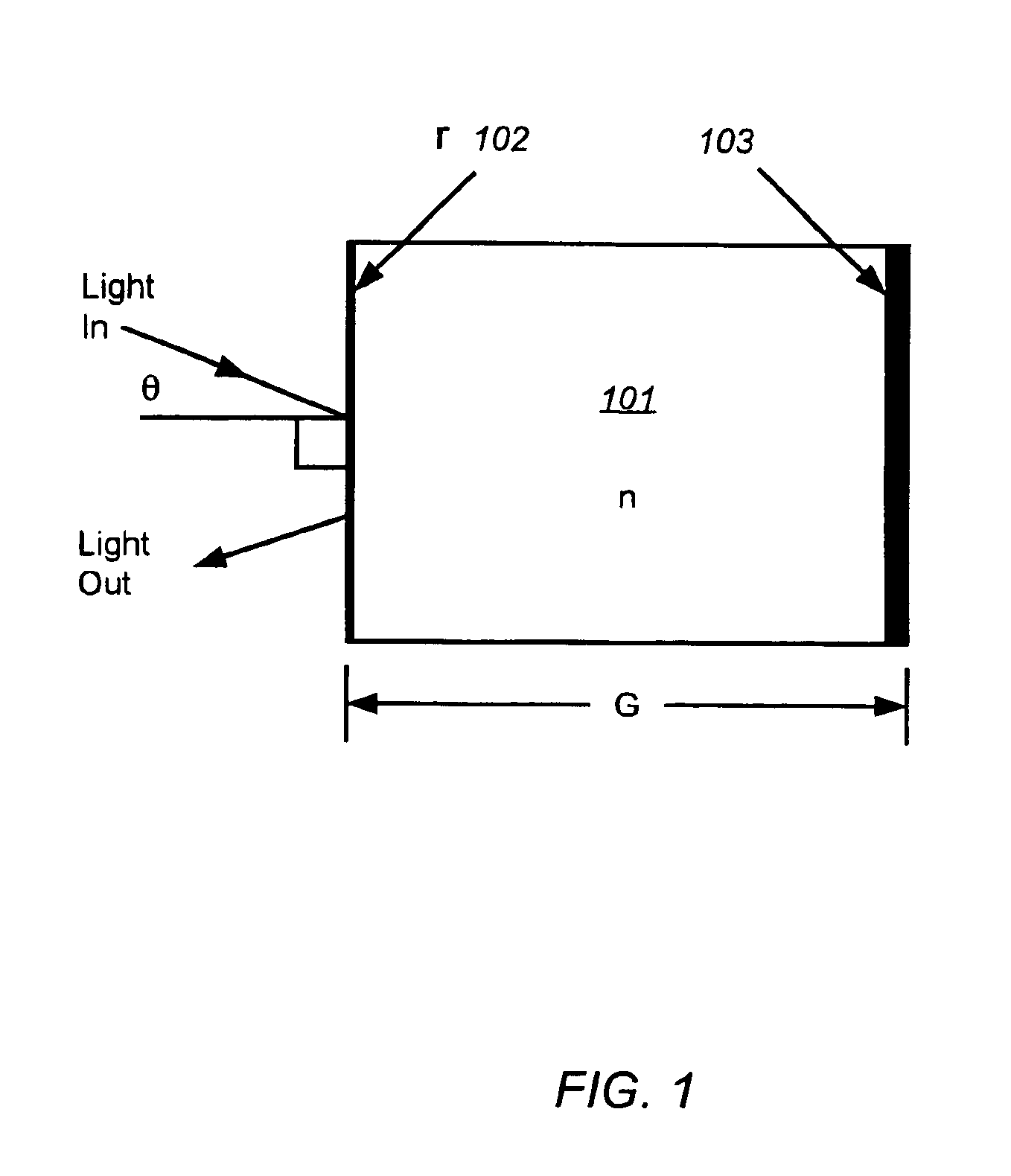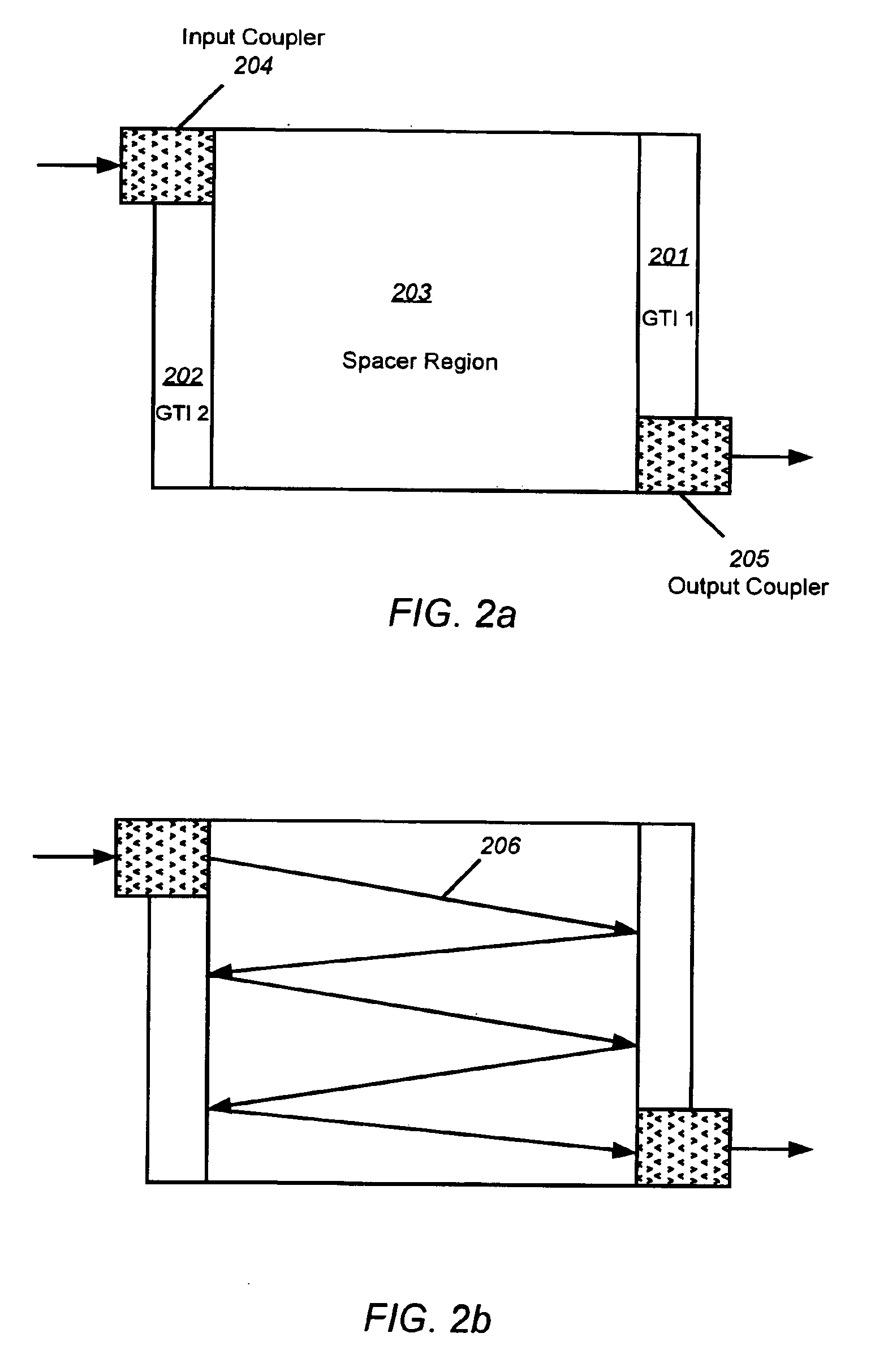Dispersion compensation using resonant cavities
a resonant cavity and dispersion compensation technology, applied in the field of dispersion compensation systems and methods, can solve the problems of limiting the distance that high data rate optical signals can be transmitted through optical fibers, fiber dispersion, and chromatic dispersion becoming critical issues,
- Summary
- Abstract
- Description
- Claims
- Application Information
AI Technical Summary
Benefits of technology
Problems solved by technology
Method used
Image
Examples
Embodiment Construction
In the following description of preferred embodiments, reference is made to the accompanying drawings which form a part hereof, and in which is shown by way of illustration specific embodiments in which the invention may be practiced. It is to be understood that other embodiments may be utilized and structural changes may be made without departing from the scope of the preferred embodiments of the present invention.
Multi-stage, all-pass optical filters can be used to make low-loss, multi-channel dispersion compensation modules. The all-pass optical filters can be ring resonators in waveguides, GTIs in free space form, and the like. The embodiments of the present invention discussed herein concentrate on free-space GTI-based all-pass dispersion filters for purposes of explanation and illustration, but it should be understood that all forms of GTI-based dispersion filters fall within the scope of the present invention. These dispersion filters include, but are not limited to, a loop o...
PUM
 Login to View More
Login to View More Abstract
Description
Claims
Application Information
 Login to View More
Login to View More - R&D
- Intellectual Property
- Life Sciences
- Materials
- Tech Scout
- Unparalleled Data Quality
- Higher Quality Content
- 60% Fewer Hallucinations
Browse by: Latest US Patents, China's latest patents, Technical Efficacy Thesaurus, Application Domain, Technology Topic, Popular Technical Reports.
© 2025 PatSnap. All rights reserved.Legal|Privacy policy|Modern Slavery Act Transparency Statement|Sitemap|About US| Contact US: help@patsnap.com



